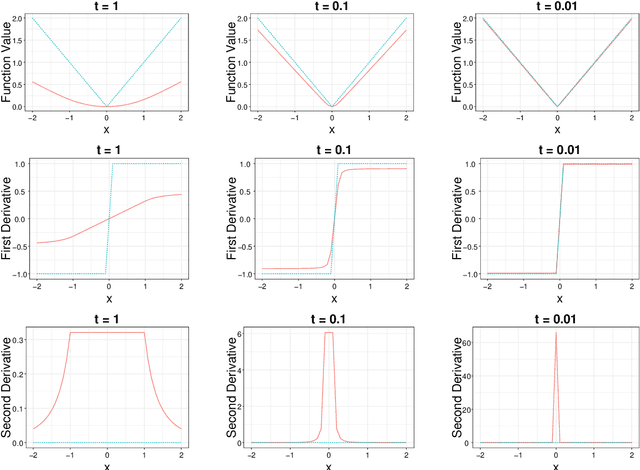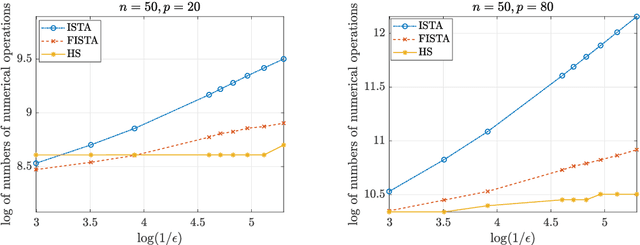A Homotopic Method to Solve the Lasso Problems with an Improved Upper Bound of Convergence Rate
Paper and Code
Oct 26, 2020



In optimization, it is known that when the objective functions are strictly convex and well-conditioned, gradient based approaches can be extremely effective, e.g., achieving the exponential rate in convergence. On the other hand, the existing Lasso-type of estimator in general cannot achieve the optimal rate due to the undesirable behavior of the absolute function at the origin. A homotopic method is to use a sequence of surrogate functions to approximate the $\ell_1$ penalty that is used in the Lasso-type of estimators. The surrogate functions will converge to the $\ell_1$ penalty in the Lasso estimator. At the same time, each surrogate function is strictly convex, which enables provable faster numerical rate of convergence. In this paper, we demonstrate that by meticulously defining the surrogate functions, one can prove faster numerical convergence rate than any existing methods in computing for the Lasso-type of estimators. Namely, the state-of-the-art algorithms can only guarantee $O(1/\epsilon)$ or $O(1/\sqrt{\epsilon})$ convergence rates, while we can prove an $O([\log(1/\epsilon)]^2)$ for the newly proposed algorithm. Our numerical simulations show that the new algorithm also performs better empirically.
 Add to Chrome
Add to Chrome Add to Firefox
Add to Firefox Add to Edge
Add to Edge